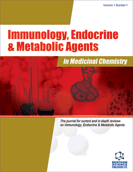Abstract
Myostatin is a member of the transforming growth factor β superfamily of secreted growth factors that negatively regulates skeletal muscle size. Mice null for the myostatin gene have a dramatically increased mass of individual muscles, reduced adiposity, increased insulin sensitivity, and resistance to obesity. Myostatin inhibition in adult mice also increases muscle mass which raises the possibility that anti-myostatin therapy could be a useful approach for treating diseases such as obesity or diabetes in addition to muscle wasting diseases. In this review I will describe the present state of our understanding of the role of myostatin and the closely related growth factor growth/differentiation factor 11 on metabolism.
Keywords: Myostatin, activin receptor type IIB, growth/differentiation factor 11, skeletal muscle, obesity, adipocyte, metabolism, GDF11, TGF, adipose tissue, insulin, ACVR2B, Follistatin, FST gene, FSTL3 gene, GASP1, wild type, receptors, vaccine, AAV, mutants, hypertrophic, hyperplastic, glycolytic, IIB fibers, body fat, propeptide, IGF1, Akt, DNA, monoclonal antibody, Ldlr, TNF, hyperinsulinemic-euglycemic clamp test, C3H 10T1/2, multipotent, BMP7, IBMX, mRNA, adiponectin, BMI, HOMA, FSTL3, C2C12, Glucocorticoids, stress, Oxidation, mitochondria
 11
11








